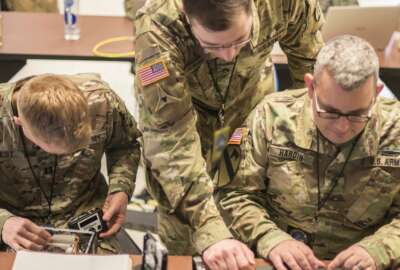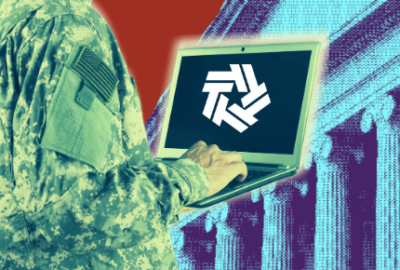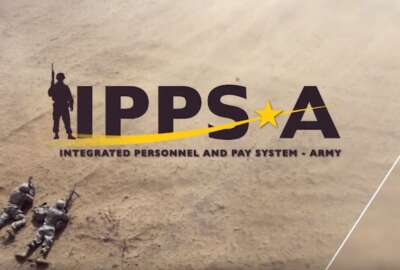Army once again delays newest release of its pay and personnel system overhaul
The IPPS-A program will bring mobile personnel and pay services to soldiers, as well as a talent marketplace.
The Army is delaying the further release of its massive human resources and benefits IT program for the second time in a year, citing issues with stress tests and soldier feedback.
The Integrated Personnel and Pay System – Army (IPPS-A) is the service’s attempt to consolidate dozens of duplicative pay and benefits systems, give soldiers mobile access to human resources information and unveil new features to soldiers like a talent marketplace to help them find their next station.
The program, however, has hit a snag on its third release — preceding releases broke ground on IPPS-A and gave some initial program aspects to members of the National Guard.
“Release 3” is a landmark for the program because it gives essential personnel services and talent management abilities to active duty, reserve and Guard soldiers.
That release hit a snag last October, which was supposed to take about a year to iron out, but now the Army says it needs to delay it further.
“We made significant progress due to the great work by our soldiers who participated as system testers, but we have more work to do before IPPS-A is ready,” Lt. Gen. Doug Stitt, deputy chief of staff, G-1, said in an Aug. 12 release. “We must get this right for our soldiers and our Army families.”
A stress test that is used to check the readiness of the system, paired with solider feedback found more issues that need to be handled before release 3 can make its debut, the Army said in the release.
This particular delay is holding off what the Army calls the Legacy Systems HR Brownout, which shuts off old systems that will be taken over by IPPS-A. The brownout precedes the cutover phase, which allows some of IPPS-A’s features to go live.
“While we delayed the brownout, Army senior Leaders will make the final decision in the coming weeks on how that ultimately affects the currently scheduled September go-live date,” Army spokesman Hank Minitrez told Federal News Network. “The team is quickly assessing the results of the [stress tests], what fixes need to be applied and the time required to retest and validate final functionality of the system. Those actions best inform us on recommendations moving forward.”
Minitrez said in the meantime soldiers should not expect to see much impact in their daily lives.
“Soldiers who were scheduled to permanent changes of station (PCS) will PCS,” he said. “Plans were developed to ensure that those who were supposed to be promoted during brownout and cutover were promoted once IPPS-A comes online. Legacy systems will be operating normally, so there will be no disruption to soldier promotions.”
The Army’s original delay to release 3 last October was also due to stress testing.
IPPS-A has had some cost growth and time slippage even before then. Original estimates on the program had the Army hitting the payroll phase by 2016, according to 2012 Congressional hearing. That is now slated for the mid-2020s.
The Army awarded a five-year, $159 million contract to CACI in 2015 to develop the program. It won a second two-year, $112.5 million contract modification in 2019 for continued support work on IPPS-A.
Adding in other contracts related to development, support and equipment for the program, the Army has already spent about $900 million on building IPPS-A, and another $200 million on testing, support and implementation. It has another $77 million budgeted for development in 2022 and $16 million for training.
Minitrez said the Army has made progress on the program since last October.
“The Army has not wavered in its commitment to getting IPPS-A, release 3 to the Army and this time has been devoted to fixing and replanning testing of the system while also ensuring readiness of the Force to begin using the system,” he said. “In an effort to best prepare the force, we conducted additional Rehearsal of Concept drills of Brownout/Cutover actions. These drills helped refine our internal processes and allowed Commands to practice execution of their tasks.”
He added that they “never stopped training and preparing the force [for] this monumental transformation. Last summer, the completion rates for mandatory training were less than ideal. That training is essential to ensure that HR professionals can conduct daily business and provide support for our customers. To stress the importance and requirements, we added several more engagements across the Army, added additional training opportunities and focused messaging to Leaders and the Force. While we still have a little ways to go, the Force has responded and our training rates have increased significantly.”
Copyright © 2025 Federal News Network. All rights reserved. This website is not intended for users located within the European Economic Area.
Scott Maucione is a defense reporter for Federal News Network and reports on human capital, workforce and the Defense Department at-large.
Follow @smaucioneWFED






